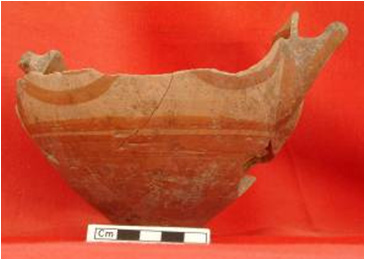“Flying chariots,” “celestial cars,” “mechanical birds,” “winged vehicles,” and “aerial cities.” These may sound like the swarming aircrafts from James Cameron’s sky-battles in Avatar, but, in fact, they come from a much older source: ancient Sanskrit literature. Called vimanas (pronounced “vimans”) in Sanskrit, such flying vehicles appear throughout India’s ancient texts, especially in combat sequences, when gods and divine beings battle their enemies high above the earth. Chariots flown by gods are not unique to Indian mythology: the Greek god Apollo flies the Sun Chariot; Kay Kavus, the mythological Persian king steers a flying throne to China; and Thor, of…
-
-
The word “Aryan” has become inseparable from poisonous Nazi doctrine over the last century, in which it became a term for describing a supposed master race of non-Jewish Caucasians, usually having Nordic features. It’s ironic when you consider “Aryan” was originally a perfectly innocent ethno-linguistic term for an ancient cultural group who couldn’t have been any different in appearance to the supposedly racially pure peoples of northern Europe the Nazis envisioned. Far from being blonde-haired, blue-eyed, fair-skinned and homogenous, the “Aryans” were a dark-skinned nomadic Eurasian tribe who spread from Central Europe and Central Asia into Southern Asia, interbreeding with…
-
The techniques and materials used to make cave paintings and other forms of rock art are almost as diverse as the people who created them. What unites these ancient artists – across almost all of the earth’s continents and over tens of thousands of years of ancient history – is their increasing level of incredible ingenuity. Handy Work The phrase ‘cave paintings’ somewhat obscures the vast range of methods used to create works of non-portable art on rocks and cave walls. They could be painted, but they could also be drawn, daubed, scratched, chipped, sculpted in relief, engraved, stenciled or…
-
Recent archaeological work at the site of Tell Tayinat in southeast Turkey, near the Syrian border, indicates that the ancient city was the centre of a Dark Age kingdom, ruled by people from the Aegean area. In an in-depth interview Professor Timothy Harrison, of the University of Toronto, told Heritage Key about this startling theory and the evidence that supports it. Around 1200 BC life changed suddenly throughout the Mediterranean world. The Mycenaean civilization in Greece and Crete, the Egyptian New Kingdom and the Hittite Empire, all collapsed at roughly the same time. It’s not until 900 BC that archaeologists…
-
For Richard Burger, archaeology has turned up many surprising things. This includes romance, which blossomed when he met his archaeologist wife, Lucy Salazar, at a dig in her native Peru. “Sites are not all that romantic. There’s too much work!” says Burger. Luckily, however, nearby Lima was in the full flood of a Southern Hemisphere Spring, and love found its way out of the dusty remains after all. But there are other surprises with wider implications for the rest of us in Burger’s work. He’s been digging in Peru for more than 20 years, much of it around the city…
-
This magnificent relief plaque in the Scythian Animal Style once formed the centrepiece of a shield. It is in the form of a panther, its tail and paws ringed with small feline beasts of prey. The naturalistic representation of the panther’s mouth with its bared teeth (despite the schematized treatment of eye and nostrils, indicated by mere circles) and the use of the cloisonne technique to decorate the ear suggest that the craftsman was acquainted with the art of the ancient East. From the Krasnodar region of Russia, Kuban area, discovered in the Kelermes burial mound N1.
-
There’s no doubting the natural durability of cave and rock art – in many cases ancient paintings, carvings and sculptures have resisted tens of thousands of years of the withering effects of history and the elements to still be around to reveal their splendor today. Yet, that’s not to say that their continued survival is guaranteed, particularly as many sites become more and more popular as tourist attractions and therefore increasingly subject to human wear and tear. Other examples simply don’t have the protection they need and are at the mercy of vandals and robbers, while some are threatened by…
-
The ancient Egyptians weren’t the only ones that mummified their dead for the sake of posterity. In more modern times, there have been multiple examples of mummification, using a range of weird and wonderful techniques from simple embalming to submerging the cadaver in a chemical-filled preservation tank, or perfusing it with wax, effectively rendering the corpse a giant human candle. Here we examine ten of the most famous examples of modern mummies, their stories, and some of the methods used to preserve them for eternity. The deceased range from an Argentinean First Lady, a Soviet Head of State and various…
-
A clay tablet dating from the start of the second millennium BC is actually a list of literary texts from a Sumerian library. It originates from Nippur (in ancient Mesopotamia, modern-day lower Iraq), which was one of the most important Sumerian cities. It is on display at the Department of Oriental Antiquities at the Louvre. Origin & Collection On display at: The Louvre Reference Number: AO 5393 Physical properties Materials: Clay
-
Attribution: Ann Key Dates 350 BC Key People King Kotys I The Borovo Treasure was accidentally discovered in 1974, when a field about 2 kilometres from the village of Borovo, Ruse (Bulgaria) was ploughed. Sadly, the plough machine’s cutting implements severely damaged the five silver artefacts, but thanks to great restoration work, nowadays their ‘scars’ are nearly invisible. No tumulus was found at the location, and why the silver treasure was buried here remains a mystery. The Borovo Treasure is a luxurious five-vessel silver gilted drinking set – decorated with gold. It consists of three rhytons (ending in the protomes of…





